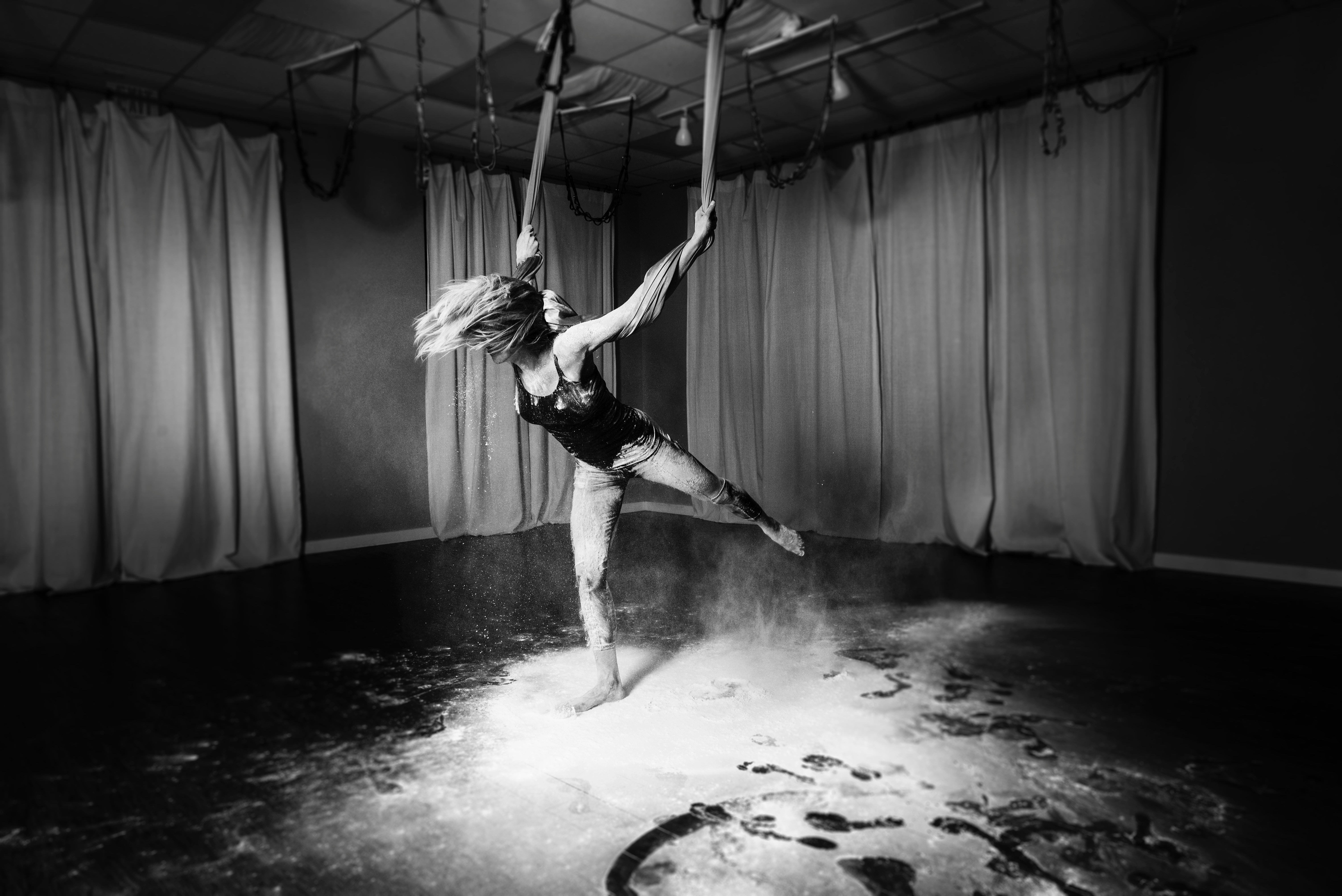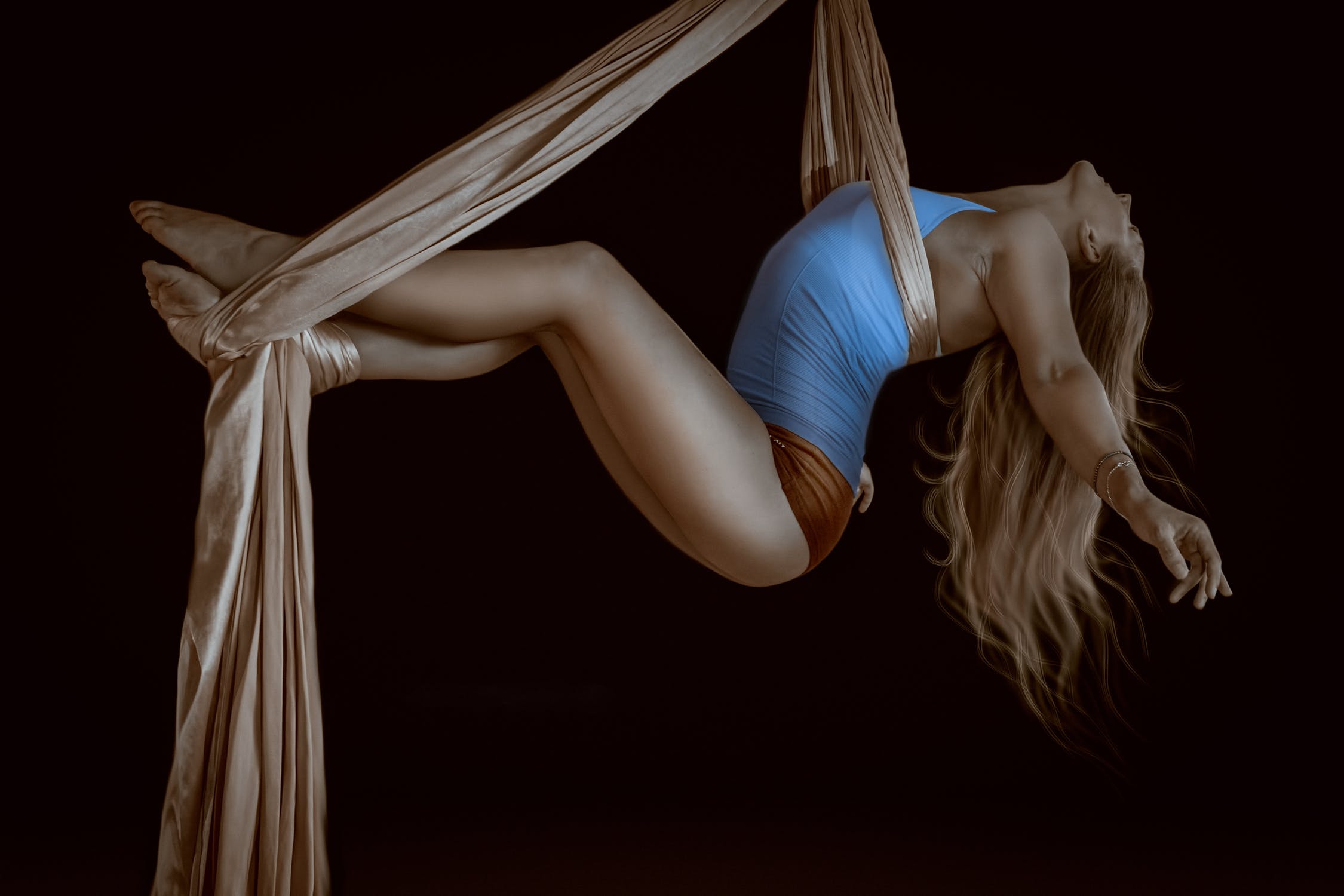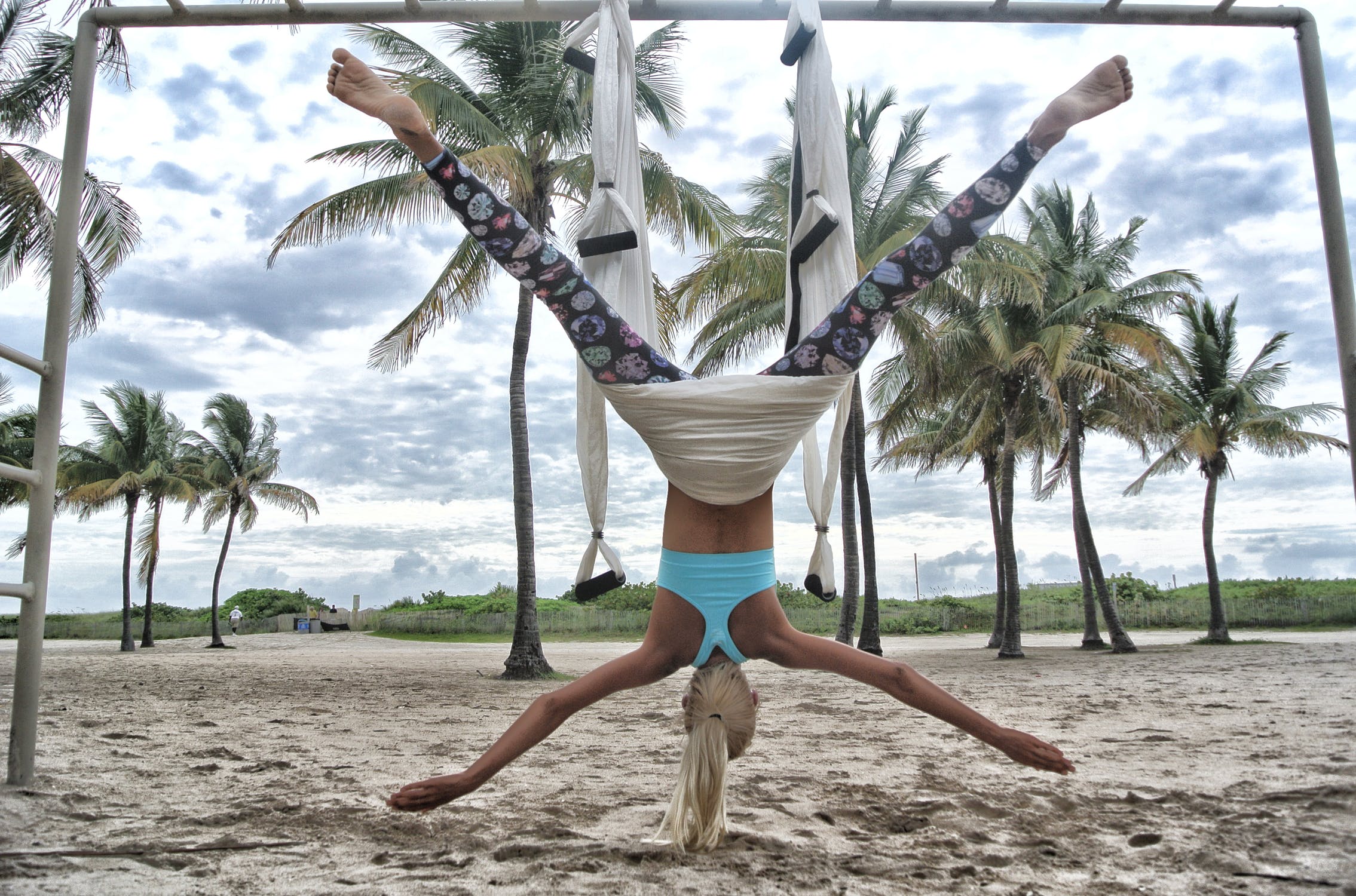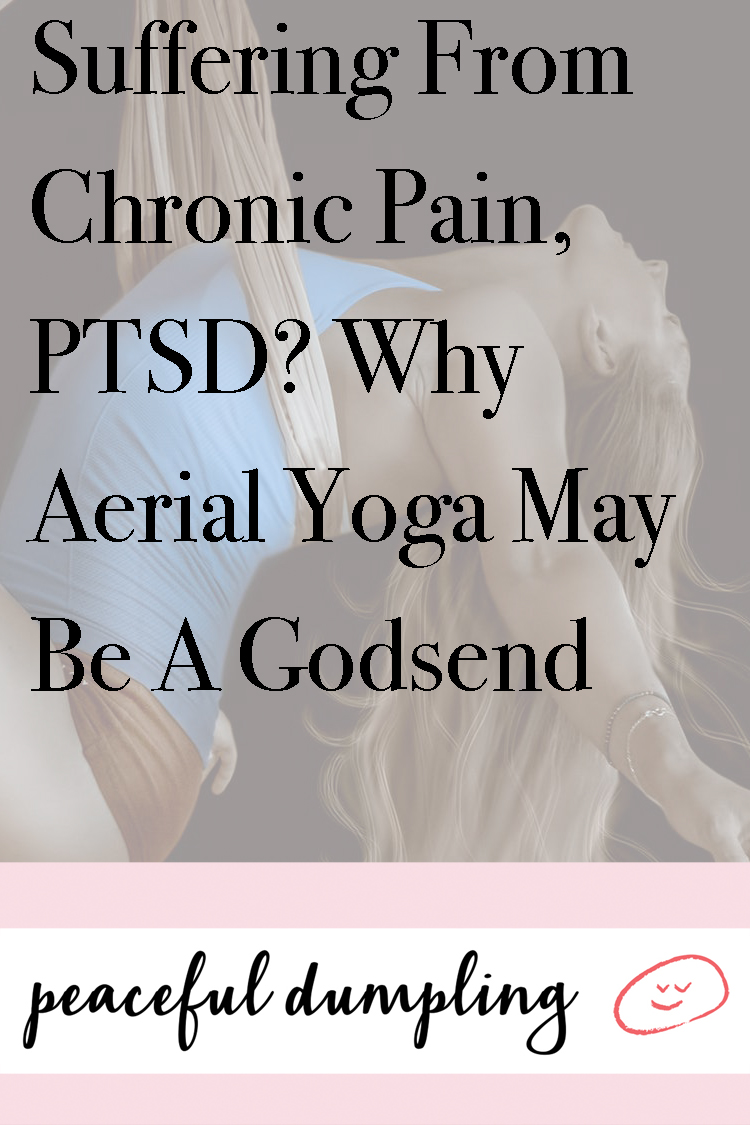Incorporating the use of suspended silk hammocks, aerial yoga gains its style from the circus arts. Sharing the mind-body connection and the poses of traditional yoga, its structure allows for more individuals with chronic pain and trauma to experience the benefits of yoga. The silk hammocks minimize pressure on the joints and provide an intimate space for self-acceptance, welcoming individuals to reap its healing powers. With continuous practice, aerial yoga can help clients alleviate the effects of chronic pain and trauma and be an integral part of recovery–well after they leave the studio.

The suspended inversions that take place in the silk hammocks offer physical advantages on the nervous system, and, for those who suffer from PTSD, this can be very rewarding. PTSD specifically affects the nervous system, putting it under constant strain. The privacy of the silks provide a sanctuary so that they may privately find emotional rest and recovery, and being upside-down pushes the mind to release and can erase any tension the body may be holding onto. This can be a therapeutic experience as inversions require a certain level of focus, bringing awareness to the body and its movements in the space. This in itself is a meditative experience and a soothing form of therapy for the body and mind.
A fitness fusion, aerial yoga incorporates characteristics from traditional yoga and aerial arts. Its structure offers a multitude of modifications, more than what is allowed during mat yoga. This can be particularly beneficial for those suffering from chronic pain. During mat yoga, there is a need to apply pressure and strain on different parts of the body. The silk hammocks provided guidance in attaining more difficult poses and flowing through the routine, without applying pressure to the areas of the body experiencing stress. The silk hammocks can reduce tension in the body without the need to activate certain areas that result in discomfort. One is then able to release and let go, without being distracted or limited by pain.

For trauma survivors, it is quite natural to dissociate oneself from the body. Many survivors struggle to rebuild that relationship again. The hammock provides a cocoon-like structure that offers an intimate and private home that facilities building that therapeutic relationship with the body again. It offers survivors the ability to form this reconnection in a safe, nurturing environment with the privacy needed to rebound.
Being suspended in air requires an element of trust that trauma survivors may be grappling with, so allowing oneself to release and let go can be a big step. The inversions mimic an on-going trust fall with oneself and require the body to release and let go. Creating a studio space that is welcoming and open for this process of recovery can be truly rewarding for a survivor of trauma and chronic pain.


Have you tried aerial yoga?
Also by Hillary: Yes, You *Can* Make Your Side Hustle Pay Off—These 3 Podcasts Show How
Related: Finally Find Relief For Your Sciatica Pain With These 4 Gentle Yoga Poses
8 Ways To Deepen Your Yoga Practice That Don’t Involve Crazy Intense Poses
Get more like this—Subscribe to our daily inspirational newsletter for exclusive content!
__
Photo: Pexels
